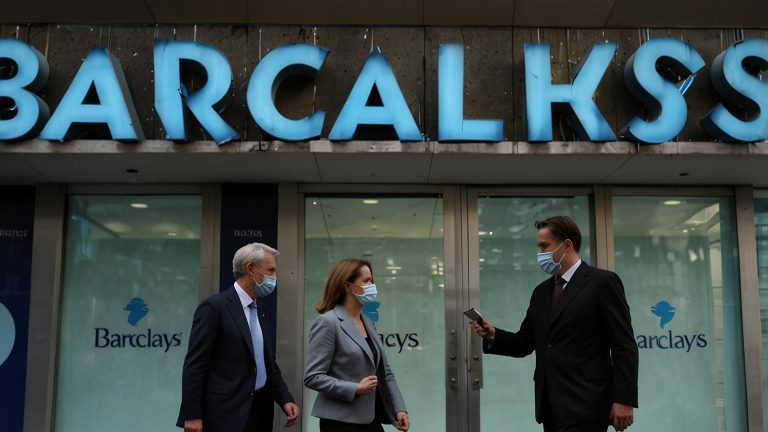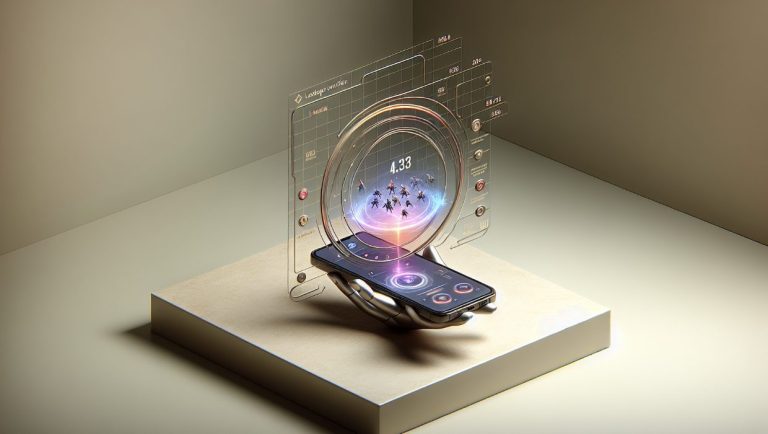As cryptocurrency adoption grows and energy efficiency becomes more critical, cloud mining is quickly becoming a go-to strategy for passive crypto income. In recent times, even big-name influencers such as Elon Musk have caught the attention of decentralized technology, thereby pushing cryptocurrency mining into the mainstream. In 2025, free cloud mining platforms are gaining momentum for offering low-risk, no-hardware-required entry points into the mining world.
Here are six cloud mining platforms making waves in 2025—starting with GlobePool and Hashbeat.
- GlobePool
Why it’s hot: Short-term contracts, fast daily payouts, and full principal refunds.
GlobePool is a cutting-edge cloud mining platform that enhances profitability by leveraging AI-driven strategies. With a network of more than 100 decentralized nodes, it constantly analyzes blockchain data, focusing on energy costs and hardware efficiency to optimize mining operations for users. More easy and great reward features are set in easy options in cloud mining through GlobePool to enable features like instant payout to more than 30 cryptocurrencies, a $15 signup bonus upon joining, and eco-friendly mining endeavors. GlobePool handles it all.
How to Start Mining with GlobePool in 3 Easy Steps
Getting started with mining on GlobePool is easy with these three simple steps:
- Register & Receive Bonus – Sign up in just 60 seconds and claim your $15 welcome bonus.
- Pick a Mining Plan – Choose a plan that suits your investment objectives.
- Monitor & Withdraw Profits – Track your earnings in real time and withdraw funds whenever you choose.
Maximize Your Crypto Earnings with GlobePool’s AI-Driven Mining Plans
MICROBT WhatsMiner M66S 290 TH/s Cloud Mining Plan
GlobePool offers an exceptional cloud mining plan featuring the MICROBT WhatsMiner M66S with a hash rate of 290 TH/s. This plan is designed to deliver consistent and profitable rewards.
Contract Details:
- Contract Price: $1,500
- Contract Term: 3 Days
- Daily Rewards: $45.00
- Total Rewards: $135.00
- Referral Bonus: $18.00
- Principal Refund: Yes
GlobePool’s Affiliate Program: Generate Passive Income
GlobePool offers a top-tier affiliate program that lets users earn up to 5% commission by referring others to the platform.
How It Works:
- Register & Get Your Referral Link – Sign up and instantly receive a $15 welcome bonus.
- Invite Others – Share your referral link across social media, forums, and websites.
- Earn Commissions – Receive a 5% commission for every successful referral investment.
Why Join the Affiliate Program?
- Instant Payouts – Get paid without any delays.
- Real-Time Tracking – Keep track of your referral earnings through a clear dashboard.
- Unlimited Earning Potential – No limits on the commissions you can earn!
Highlights:
- Plans starting at 2 days
- Daily payouts with transparent reward structures
- Referral bonuses (e.g., $8.25 per referral)
- Principal refunded after contract ends
- Hashbeat
Why it’s trending: Free $15 bonus on sign-up + beginner-friendly mining experience.
At HashBeat, elevate your cryptocurrency mining experience by providing unparalleled hash power that fuels unlimited rewards. Ideal for miners, this platform is designed for accuracy, scalability, and performance, all while providing top-of-the-line cloud mining contracts, ASICs, as well as GPU mining rigs. It is built to adapt to Bitcoin’s fluctuations, as it brings in the top emerging altcoins crowd.
Getting Started with HashBeat: Earn Crypto in 3 Simple Steps
- Create Your Free Account
Sign up in minutes and kick off your mining journey with a $15 welcome bonus—no upfront investment required. It’s fast, easy, and the perfect way to get started.
- Select Your Ideal Mining Plan
Browse a range of mining plans tailored for all experience levels. Whether you’re a beginner or a seasoned miner, you’ll find the right option to match your goals and budget.
- Earn Daily Rewards
Activate your plan and start earning! HashBeat delivers daily crypto payouts, automatically sent to your account every 24 hours—effortless, reliable, and consistent.
Earning Potential With HashBeat Crypto Mining Plans
TC Cloud Mining Basic Plan – Reliable Daily Earnings with Principal Refund
The ETC Cloud Mining Basic Plan is perfect for those looking to earn consistent crypto rewards in a short timeframe. With a contract duration of just 3 days, this plan offers daily returns and a full principal refund, making it both profitable and low-risk.
Plan Highlights:
- Contract Term: 3 Days
- Daily Rewards: $48.00
- Total Rewards Over 3 Days: $144.00
- Referral Rewards: $19.20
- Principal Refund: Yes
- Maturity Value: $1,600 (Principal) + $144.00 (Earnings) = $1,744.00
Unlock Passive Income with Hashbeats’ Affiliate Program
Hashbeats offers an attractive affiliate program with high commission rates, allowing affiliates to earn up to 5% on each successful referral. There are no limits to potential earnings, making it a great opportunity for those looking to maximize their income.
Earn Big with Our Crypto Mining Affiliate Program in 4 Easy Steps
- Sign Up for Free & Get Your Referral Link
Join the platform with a quick, hassle-free registration and instantly receive your unique referral link—plus a welcome bonus to get you started.
- Promote & Share Your Link
Spread the word! Share your referral link on social media, forums, blogs, or directly with friends. The more people you reach, the more you can earn.
- Withdraw Your Crypto Earnings Instantly
No, waiting around—your commissions are available for instant withdrawal, giving you real-time access to your earnings.
- Collect Your Referral Rewards
Earn generous referral rewards every time someone joins and invests through your link. There’s no cap on earnings—just ongoing passive income.
- IceMining
Why it’s rising: Sustainable crypto mining with a green energy focus.
IceMining appeals to eco-conscious investors by using renewable energy-powered data centers. They offer daily Bitcoin payouts with no setup required. With transparency reports and a mobile dashboard, users stay in control.
- BeMine
Why users love it: Real ASIC hardware ownership meets cloud control.
BeMine is one of the first platforms to let users buy shares of real mining machines and manage them remotely. Investors can co-own devices and split profits accordingly. While it’s not free, it’s a long-term value play with real hardware backing.
- StormGain
Why it’s a favorite: Cloud mining integrated with crypto trading.
StormGain offers free cloud mining within its crypto exchange app. Users can mine small amounts of Bitcoin and boost mining speed by trading or holding funds on the platform. Great for traders looking to earn passively while managing assets.
- ECOS
Why it’s reliable: Government-backed mining platform with long-term plans.
ECOS operates out of a government-backed crypto mining zone in Armenia, offering robust mining contracts and wallet support. It provides full transparency and long-term investment opportunities in BTC, ETH, and more.
Final Thoughts
In 2025, cloud mining has evolved from a niche activity for tech enthusiasts and crypto whales into a powerful entry point for everyday users seeking passive income. With the rise of platforms like GlobePool and Hashbeat, the barriers to entry are lower than ever—free sign-ups, daily crypto rewards, and short-term, low-risk contracts have made mining accessible to nearly anyone with an internet connection.
As mining becomes simpler, safer, and more transparent, platforms like these are poised to lead the next wave of adoption, bringing passive crypto income to millions around the globe.
FAQs: GlobePool Edition
Q1: Is GlobePool legit or a scam?
GlobePool appears to be a legitimate platform, offering transparent contracts and principal refunds. It has gained trust through clear daily payout structures and positive early reviews. However, as with any investment, it’s wise to do your own research (DYOR).
Q2: How fast are rewards paid?
Rewards are distributed every 24 hours from the time your contract starts. This ensures a steady and predictable income flow for users. Payouts are credited directly to your account daily.
Q3: Can I withdraw rewards at any time?
Of course! One can immediately withdraw rewards upon being credited. Referral bonuses are also deposited in crypto and can be either withdrawn or reinvested. There are no holding periods or delays for withdrawals.
Q4: Are there any upfront fees?
No hidden fees apply—users simply pay the listed contract price, such as $750 for the KS5 plan. The full principal is returned at the end of the term. Everything is clearly outlined before purchase.
Investor Reviews: What Real Users Are Saying About GlobePool
User 1: Fast payouts, no hidden fees
“I was skeptical at first, but GlobePool really impressed me. I started with the Bitmain KS5 2-day plan, invested $750, and got $40.50 in rewards plus my principal back. The best part? I didn’t have to do anything after activating the plan. It’s perfect for people like me who don’t have time to monitor complicated setups.”
User 2: Beginner-friendly, and the referral program is a real money-maker
“I’ve tested several cloud mining platforms, but GlobePool stands out for how easy it is to use. The interface is clean, and I love that I get paid every 24 hours. The referral bonus is generous—I’ve already made over $100 just from sharing the link with friends on Telegram. It’s a great passive income stream.”
User 3: A short-term plan that actually delivers
“Most cloud mining services lock your money for months or hit you with withdrawal restrictions. Two-day GlobePool contracts are free. They have performed satisfactorily and provided payments. Plus, I’ve featured them on my channel, and the feedback from my viewers has been overwhelmingly positive.”
User 4: Perfect for building a crypto side hustle without risks
“I wanted to get into crypto but didn’t have the money or technical skills to build a mining rig. GlobePool gave me a way to start small. I used my savings to try out their basic plan and was amazed at how quickly I saw returns. I’ve now reinvested my rewards into longer-term plans and even earned extra through referrals.”













 Bitcoin
Bitcoin  Ethereum
Ethereum  Tether
Tether  XRP
XRP  Solana
Solana  USDC
USDC  Cardano
Cardano  TRON
TRON  Lido Staked Ether
Lido Staked Ether  Avalanche
Avalanche  Toncoin
Toncoin